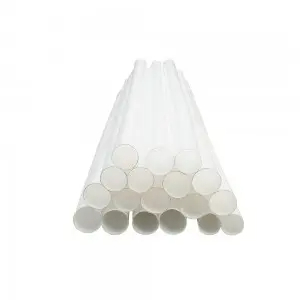PTFE (polytetrafluoroethylene) bushes, also known as Teflon bushes, are widely used in various industries for their unique properties and benefits. In China, PTFE bushes are manufactured and supplied by numerous companies, making them a popular choice for many applications. When comparing PTFE bushes to traditional metal or plastic bushings, it is important to consider their advantages and disadvantages to determine the most suitable option for specific requirements.
Advantages of PTFE Bushes:

1. Low Friction: PTFE has a very low coefficient of friction, making it an excellent choice for applications where smooth and consistent movement is required. This property reduces wear and tear on the bushing and the mating surface, leading to longer service life and improved efficiency.
2. Chemical Resistance: PTFE is highly resistant to chemicals, acids, and solvents, making it suitable for use in corrosive environments. This resistance ensures that the bushes remain unaffected by the surrounding substances, maintaining their integrity and performance over time.
3. Temperature Resistance: PTFE bushes can withstand a wide range of temperatures, from extremely low to high temperatures, without losing their mechanical properties. This makes them suitable for applications where temperature variations are common.
4. Self-Lubricating: PTFE has inherent self-lubricating properties, eliminating the need for additional lubrication. This reduces maintenance requirements and ensures smooth operation of the bushes without the risk of dry running.
5. Insulating Properties: PTFE is an excellent electrical insulator, making it suitable for applications where electrical conductivity needs to be minimized. This property prevents electrical arcing and ensures the safety of the equipment and personnel.
Disadvantages of PTFE Bushes:
1. Cost: PTFE bushes can be more expensive than traditional metal or plastic bushings, which may impact the overall cost of the equipment or application. However, the long-term benefits of PTFE bushes often outweigh the initial investment.
2. Load Capacity: While PTFE has excellent low-friction properties, it may have limitations in high-load applications compared to some metal bushings. It is important to consider the specific load requirements when choosing PTFE bushes for a particular application.
3. Machinability: PTFE is a challenging material to machine, which can make the manufacturing process more complex and time-consuming. This may result in longer lead times for custom PTFE bushes.
Comparing with Traditional Metal Bushings:
Metal bushings, such as bronze or steel, are known for their high load capacity and durability. However, they may require lubrication to reduce friction and wear. In contrast, PTFE bushes offer low friction without the need for additional lubrication, making them suitable for applications where maintenance needs to be minimized.
Additionally, metal bushings may be susceptible to corrosion in certain environments, while PTFE bushes are highly resistant to corrosion and chemical exposure. This makes PTFE bushes a preferred choice for applications where environmental factors can impact the performance of the bushings.
Comparing with Traditional Plastic Bushings:
Plastic bushings, including nylon and polyurethane, are lightweight and cost-effective options for many applications. However, they may not offer the same level of chemical and temperature resistance as PTFE bushes. PTFE bushes excel in harsh operating conditions where traditional plastic bushings may degrade or fail.
Furthermore, PTFE bushes have superior low-friction properties compared to most plastic bushings, providing smoother and more efficient operation in various applications. This makes PTFE bushes a preferred choice for high-performance and precision equipment.
In conclusion, PTFE bushes offer a unique combination of properties that make them a versatile and reliable choice for a wide range of applications. While they may have some limitations in terms of load capacity and cost, their exceptional low friction, chemical resistance, temperature resistance, self-lubricating properties, and insulating properties set them apart from traditional metal or plastic bushings. When selecting bushings for specific applications, it is essential to carefully evaluate the requirements and consider the advantages and disadvantages of PTFE bushes to make an informed decision. In China, the availability of PTFE bushes from reputable manufacturers further enhances their appeal as a viable solution for various industrial and commercial needs.

Post time: Apr-28-2024

